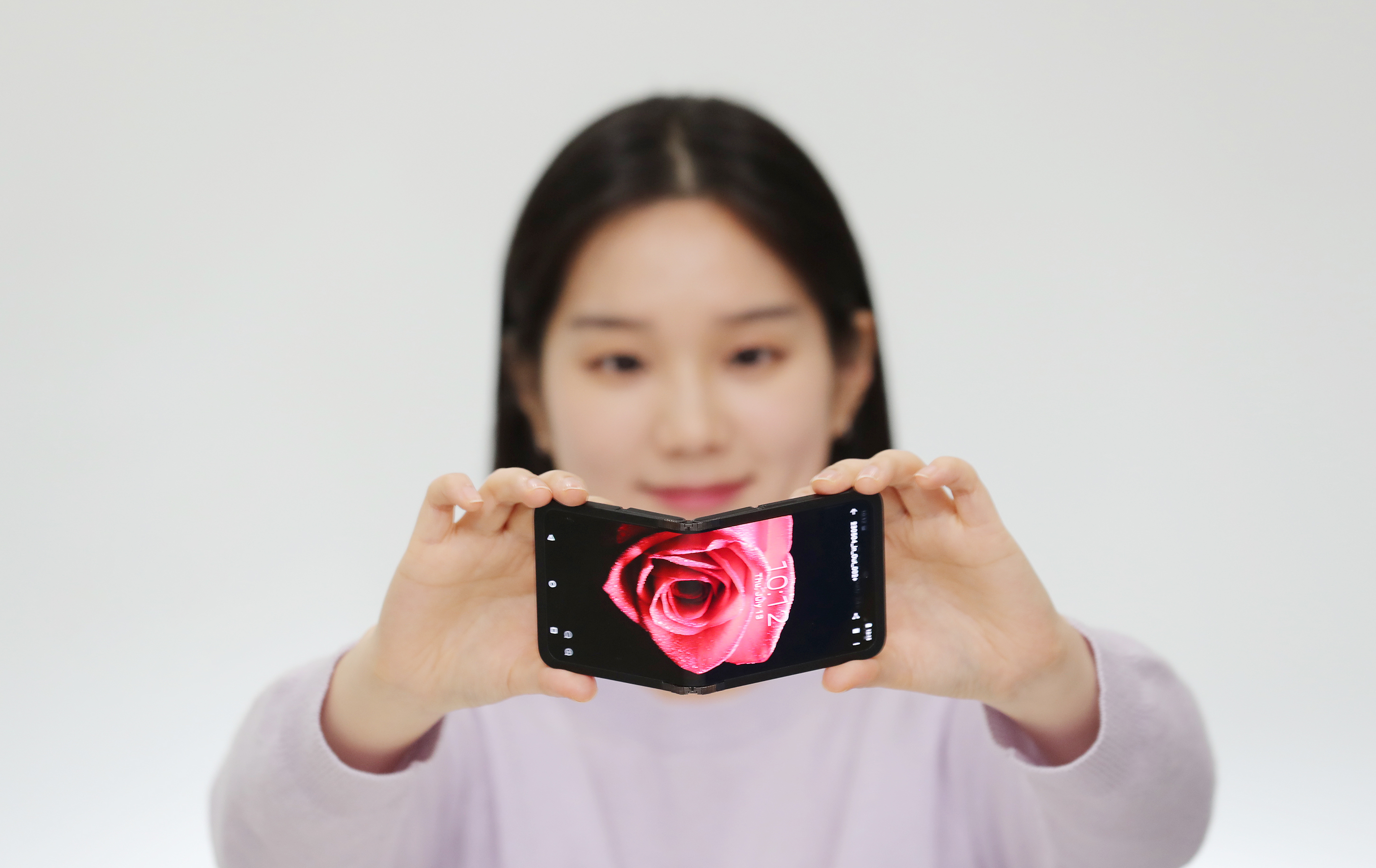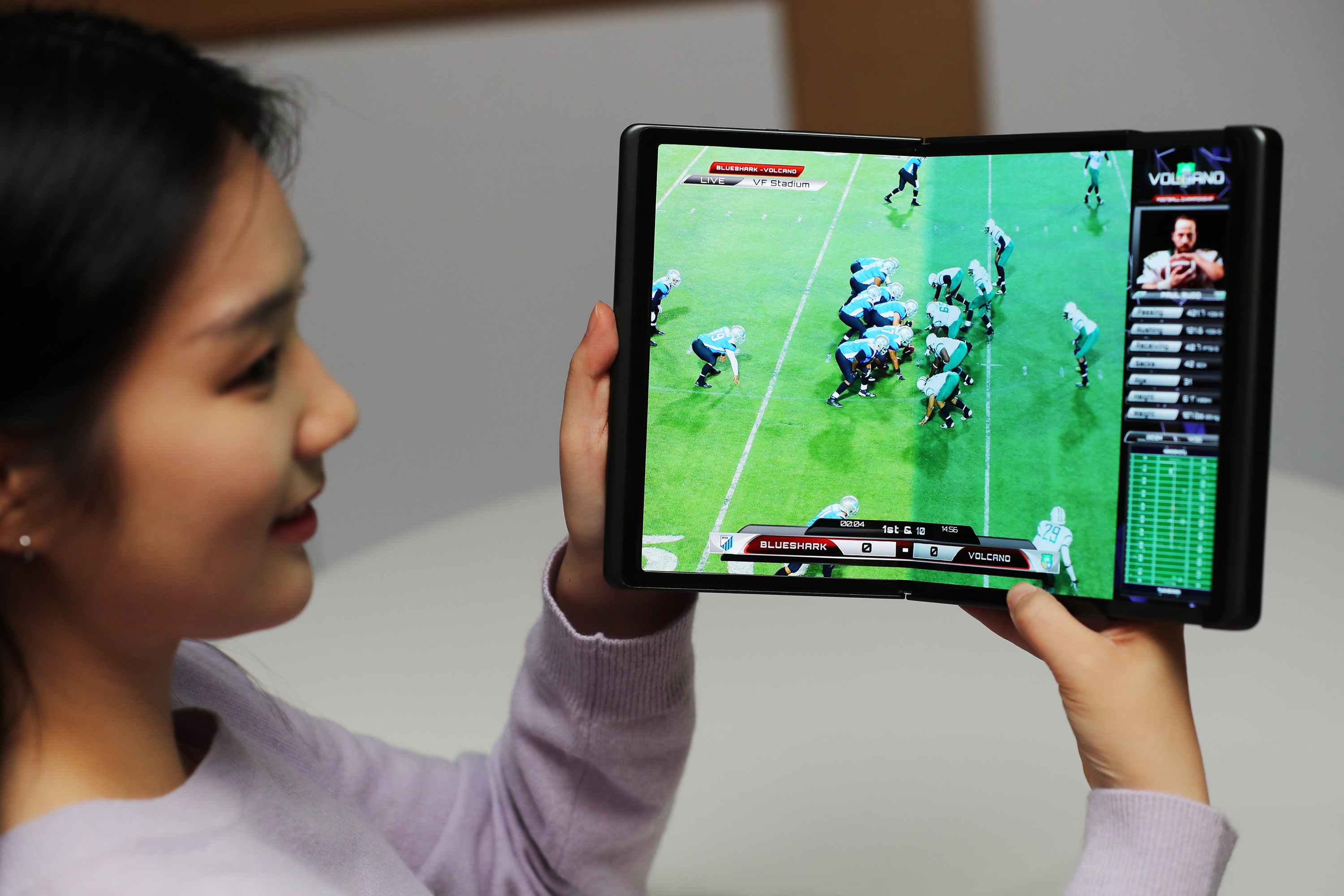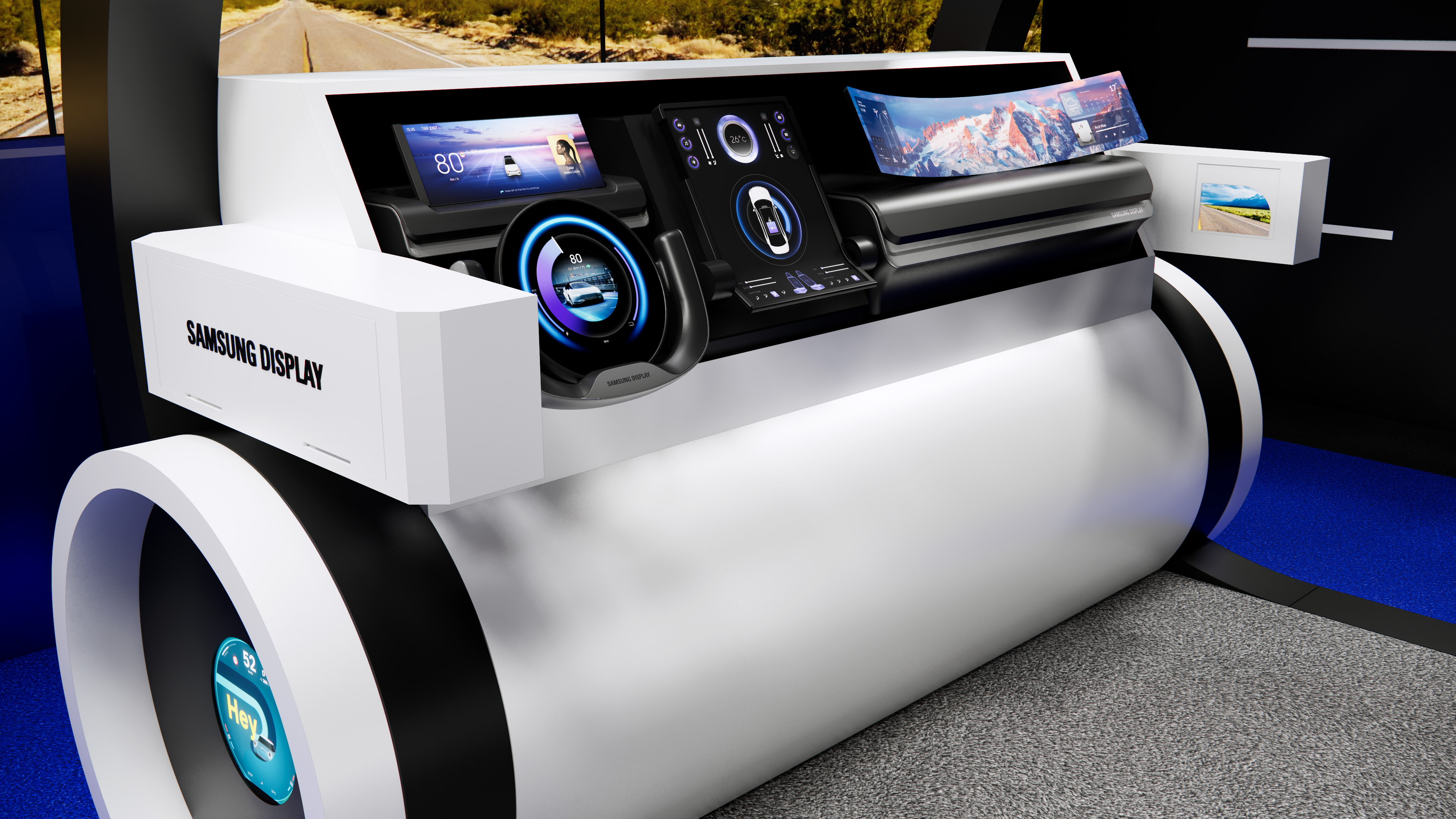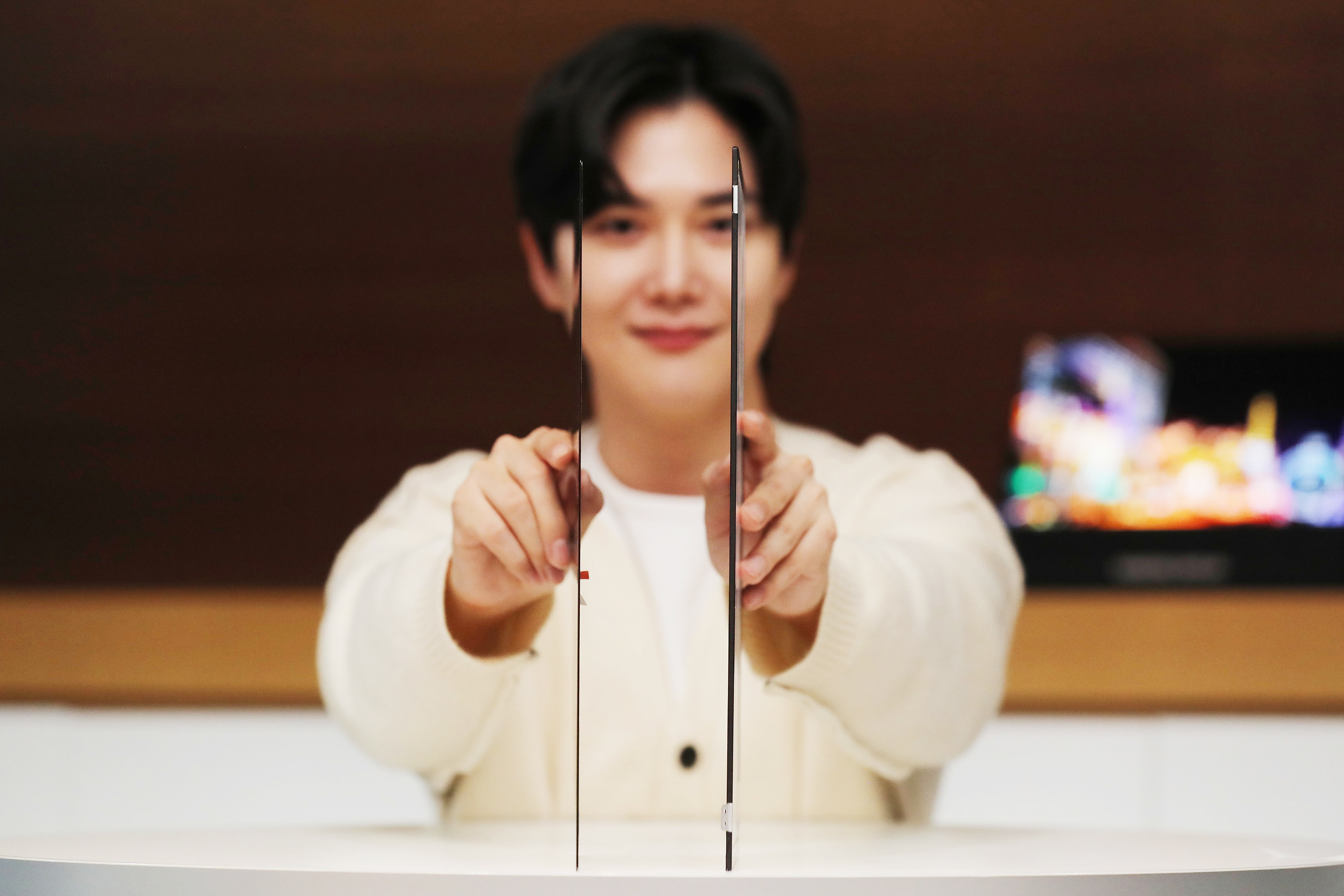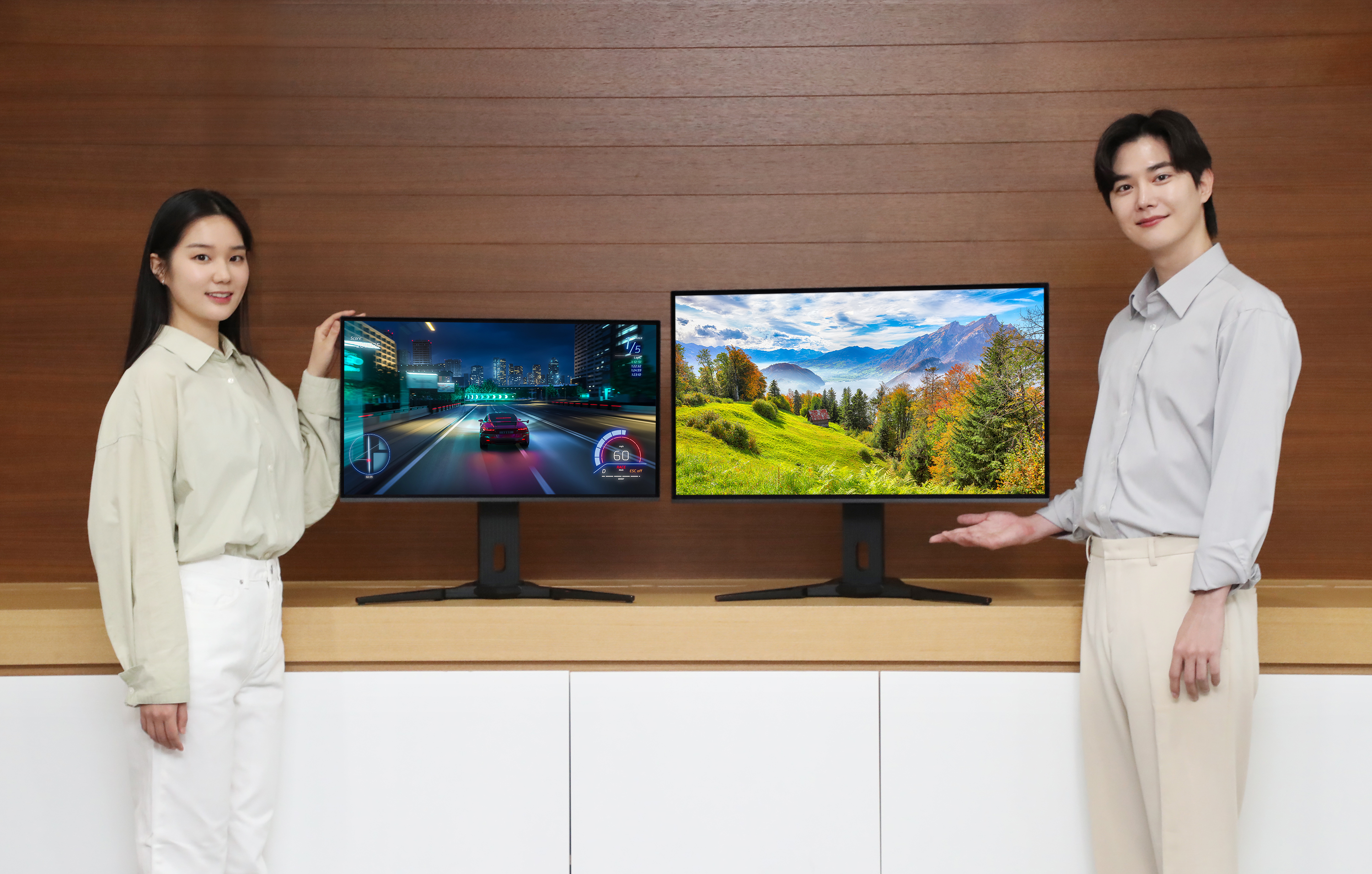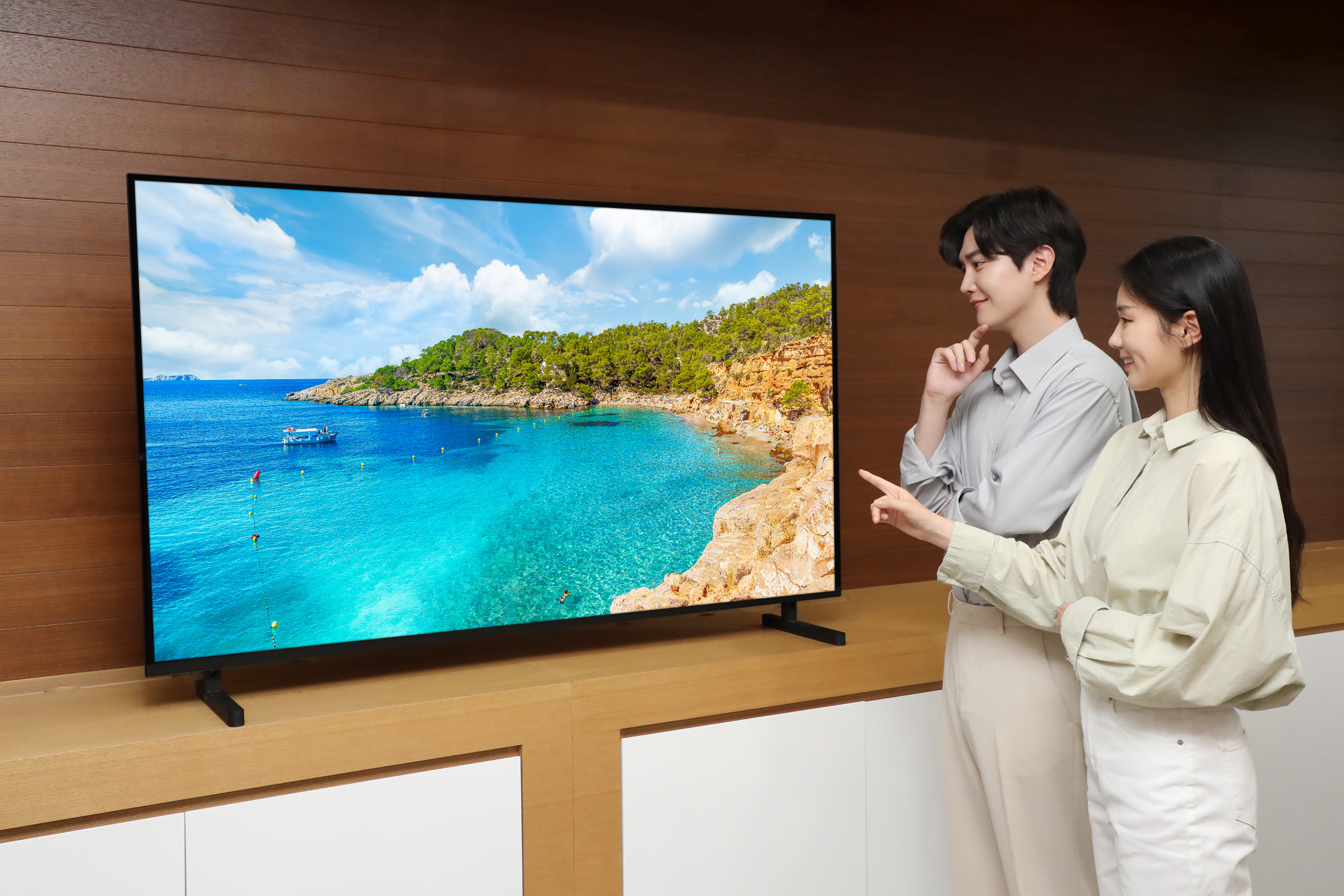Samsung Display to Showcase Leading Foldable Technology at CES 2024
• Unveils a new generation of products that can be easily folded in and out, as well as rollable and slidable display technologies
• Presents a microdisplay with ultra-high resolution for immersive XR experiences
• Exhibits OLED technology with unrivaled size, ultra-thin panels and displays in various form factors, including revolutionary OLED products for vehicle interiors
• Spotlights monitors that are not only for gaming and entertainment but also for professional use in video production and medical applications
Samsung Display is set to showcase a variety of groundbreaking products at CES 2024 that will shape the future of the display industry. The company will be participating in the event held in Las Vegas, USA from January 9–12, with an exhibition revolving around the theme ‘All-in Innovative Tech: Paving the New Journey’.
The company will unveil a new generation of products that can be folded inwards and outwards. Additionally, new monitor-sized OLEDs with both foldable and slidable technologies will be unveiled. It will also showcase a microdisplay with ultra-high resolution for immersive extended reality (XR) experiences that will enhance the way users interact with their devices.
Samsung Display will showcase its OLED technology across various sizes and form factors. This includes QD-OLEDs designed for monitors with the highest level of pixel density and refresh rates for self-illuminating technology. The company will also present QD-OLEDs specifically developed for televisions, boasting the highest brightness available in the market.
Flex In&Out™ Flip folds in and out 360 degrees and Rollable Flex™ offers 5x the screen size
One of the most eye-catching products at CES 2024 is the Flex In&Out™ Flip, a foldable device with a flip-phone design. Its unique in-and-out foldable technology allows it to fold 360 degrees. Unlike traditional in-folding devices that require an additional panel on the outside for displaying information when folded, Flex In&Out™ Flip achieves a sleeker and thinner design with a single display that can be folded outwards to allow use of the display even when folded.
“Flex In&Out™ Flip is a technology that can provide a new alternative for consumers who prefer bar-shaped smartphones due to the thickness of foldable products,” said a Samsung Display representative. “When folded outwards, both the front and back of the product can be used as a screen, creating a new user experience.”
Samsung Display’s durability tests showcase its expertise in foldable technology. The panels underwent folding in extreme temperatures ranging from -20 degrees Celsius to 60 degrees Celsius. Additionally, basketballs are bounced on the foldable panels, and the smartphones are subjected to rubbing with sand and immersion in water. These rigorous tests should provide customers with a clear understanding of the durability of Samsung’s foldable products, even in challenging environments.
Samsung Display will not only be presenting its foldable products at the event but also a range of other innovative offerings. One of these is the Rollable Flex™, a unique device that allows the screen to expand up to five times its original size when unrolled, resembling the action of unrolling a scroll. Another exciting product is the Flex Hybrid, which combines the functionalities of both foldable and slidable technologies. Lastly, Samsung Display will also showcase a wireless earphone case that features a built-in display. These products demonstrate Samsung’s commitment to pushing the boundaries of display technology and delivering innovative solutions to consumers.
Find the hidden display in the vehicle
Samsung Display will be showcasing its revolutionary OLED products for vehicle interiors, including the Flex Note Extendable™. This innovative product features a foldable panel that can be unfolded and extended to provide a larger screen size. The Flex Note Extendable™ measures 11 inches when fully folded but can be extended to 13.8 inches with a 10:9 aspect ratio by unfolding one side. By sliding out the other section, the size can be further extended to 17.3 inches with a 4:3 aspect ratio. This flexible design allows for an optimized user experience based on the content being displayed.
The screen can serve as a laptop for working in the car or as an extended display for watching movies. When not in use, it can be minimized to save space in the car.
“Cars are now evolving into a mobile space beyond just a means of transportation,” said a Samsung Display representative. “OLED products combined with foldable and slidable technologies will accelerate this transformation.”
Displays can be concealed in various areas of the car and easily accessed when needed. An instance of this is a roll-up display, similar in size to a tablet (12.4 inches), discreetly stored within the front passenger headrest. This display can be extended vertically to accommodate different needs, ensuring flexibility and convenience.
World’s first 8.6-generation glass for OLEDs for IT and ultra-thin panels
Highlighting the shift from LCD to OLED technology in the IT industry, Samsung Display will demonstrate its strength at CES 2024.
At CES, Samsung Display will showcase its investment in the 8.6-generation OLED for IT by displaying a nearly 3-meter-high mother glass. This glass, measuring 2290x2620mm, is the largest in the industry and aims to attract visitors’ attention. The 8.6-generation mother glass is more than twice the size of the existing sixth-generation glass, resulting in improved production efficiency. The company will also present special content at CES to give visitors an experience of the size and capabilities of this new technology.
One notable feature is the ultra-thin (UT) panel. Samsung Display’s UT OLED panels are about 0.6mm thick, similar to the thickness of a business card, which is one-third the thickness of an LCD panel. This difference is easily noticeable even to the naked eye. Additionally, the UT OLED panels are lightweight, with three UT OLED panels weighing the same as one LCD panel of the same size.
“By applying a new module process, we have reduced the thickness while maintaining the same strength,” said a Samsung Display representative. “We are confident that this will help laptop and tablet manufacturers increase portability and differentiate their designs.”
Material advancements have led to the development of technology that reduces power consumption. Thin-film transistors (TFTs), which regulate current flow, now utilize 100% oxide instead of amorphous silicon (a-Si). This change allows for faster electron movement (about 10 times faster than with a-Si) and reduces current leakage. As a result, flickering, which occurs when a display is driven at a low refresh rate, can be eliminated. Samsung Display’s latest products are the first IT panels to support variable refresh rates as low as 1Hz, enabling significant power savings.
Unveiling OLEDoS: XR technology delivers industry-leading pixel density and brightness
Samsung Display is the first to publicly introduce an RGB version of OLEDoS (OLED on Silicon). OLEDoS are high-definition displays with small pixel sizes, achieved by applying organic materials to silicon wafers. These displays will play a crucial role in XR headsets, which are growing in popularity.
This will be the highest resolution RGB OLEDoS display when compared to what is available in the industry currently. Despite its small size of 1.03 inches, it boasts a pixel density of 3500 PPI, comparable to a 4K TV. RGB OLEDoS utilizes red, green and blue OLEDs on a silicon wafer to generate colors without the need for a separate light source.
eMagin, the U.S.-based OLEDoS company acquired by Samsung Display, will showcase its products at the event. This includes its OLEDoS-enabled military helmets and night vision goggles.
QD-OLED to become a ‘monitor hero‘
Samsung Display will demonstrate its competitive edge in the large-size display sector by introducing the highest quality self-illuminating, ultra-high-definition (UHD) OLED monitor and the world’s first 360Hz OLED monitor.
The company is launching a new 31.5-inch UHD (3840x2160) QD-OLED monitor. It has the highest pixel density and UHD resolution among self-illuminating monitors. The pixel density is increased to 140 PPI (Pixel Per Inch), which is equivalent to the picture clarity of a 65-inch 8K TV. The refresh rate can go up to 240Hz.
Samsung Display is set to introduce a 27-inch panel with a groundbreaking self-illuminating refresh rate of 360Hz, which is the highest amongst mass-produced panels. This high refresh rate, combined with the quick response time of QD-OLED technology, will enhance the immersive experience for activities like gaming and sports that involve rapid screen changes.
Samsung Display has created an exhibition space to showcase its monitors. The monitors are not only for gaming and entertainment but also for professional use in video production and medical applications. With the slogan ‘Better Performance! More Professional!’, Samsung Display aims to expand its target market into these professional areas.
“This is the year that Samsung Display’s QD-OLEDs prove its unrivaled superiority in picture quality and establish themselves as ‘monitor heroes,’” said a Samsung Display representative.
The TV panel has been upgraded to a brighter third-generation QD-OLED, which will be showcased at CES. This new version utilizes advanced panel drive technology and artificial intelligence (AI) to achieve a maximum brightness of over 3000 nits. This makes it the brightest OLED TV panel available, surpassing previous models. Each RGB color also sees a significant increase in brightness, approximately 50% more compared to last year’s version.
Samsung Display partnered with Pantone, a well-known color company, to ensure accurate color representation. Pantone is responsible for the Pantone Matching System (PMS), a widely recognized color standard that assigns a unique number to each color. This system allows for consistent color reproduction across different mediums and locations. At CES, attendees can compare the colors on the TV screen with Pantone’s color chips to determine if the QD-OLEDs accurately reproduce colors. Samsung Display’s QD-OLEDs are the first display to receive ‘Pantone Validated’, highlighting its commitment to delivering true-to-life colors.
